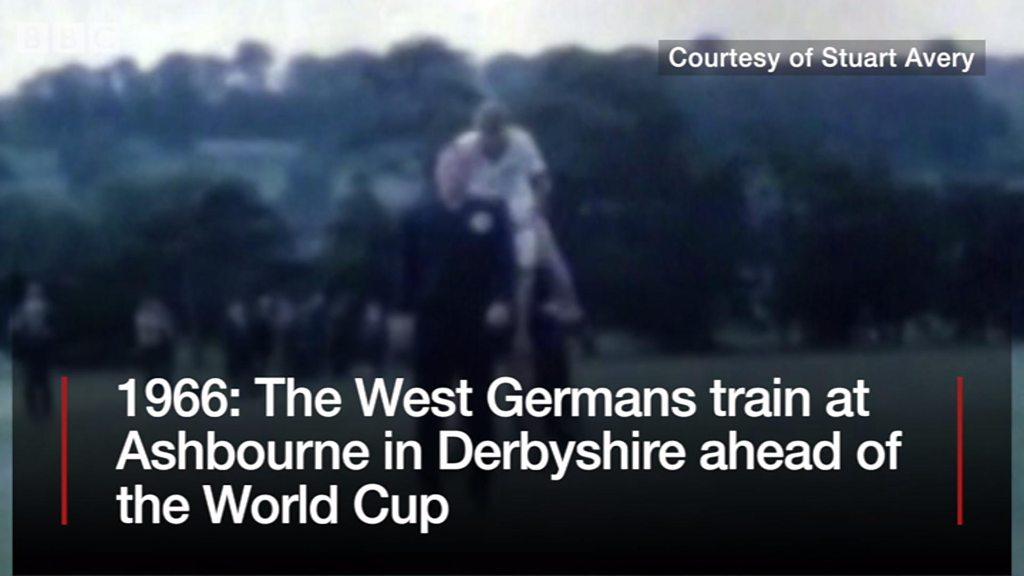World Cup 1966: When the West Germans came to Ashbourne
- Published
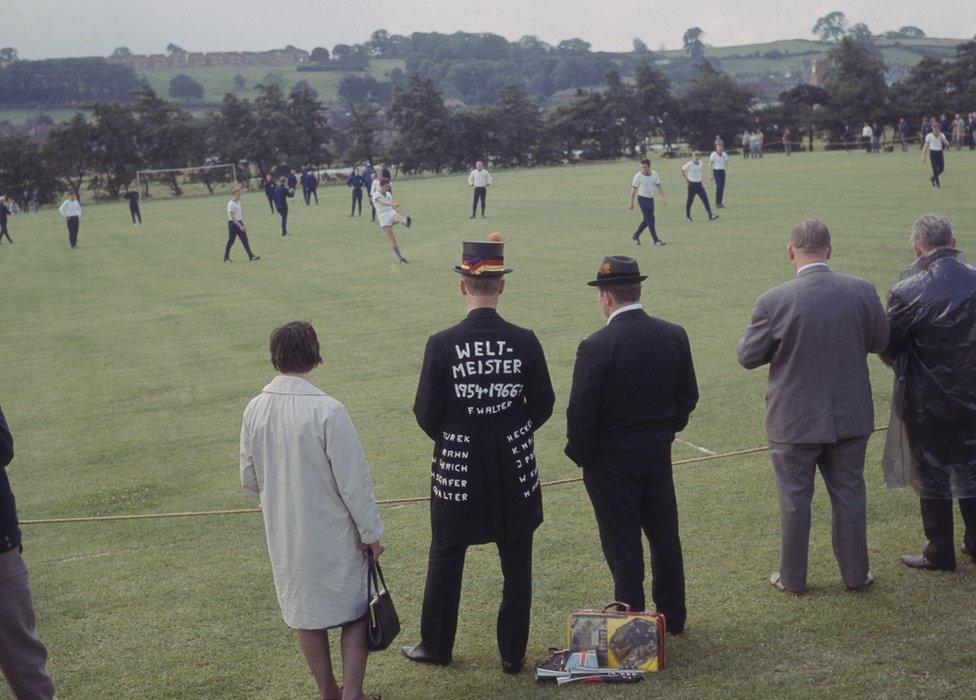
The West German squad training at Ashbourne, Derbyshire, during the 1966 World Cup
Previously unseen photographs and film footage are the focus of a new exhibition that documents the time West Germany's 1966 World Cup squad spent based in a small market town in the Derbyshire Dales.
Ashbourne is more famous for Shrovetide football - its own chaotic and brutal form of the beautiful game - than international soccer.
But the town can claim its own footnote in the story of the 1966 World Cup, having played host to "Die Nationalmannschaft" for 18 days from 8 July.

West German players Helmut Haller (left) and Max Lorenz sign autographs in Ashbourne
In an era when football was much less commercial - and some would say was all the better for this - there were no behind-closed-doors training sessions at plush, well-equipped stadia.
Instead, players of the calibre of legendary captain Uwe Seeler and Germany's most celebrated footballer, Franz Beckenbauer, practised on Ashbourne's playing fields, with the Derbyshire hills framing this improbable scene.

The West German team head to Ashbourne's playing fields to train
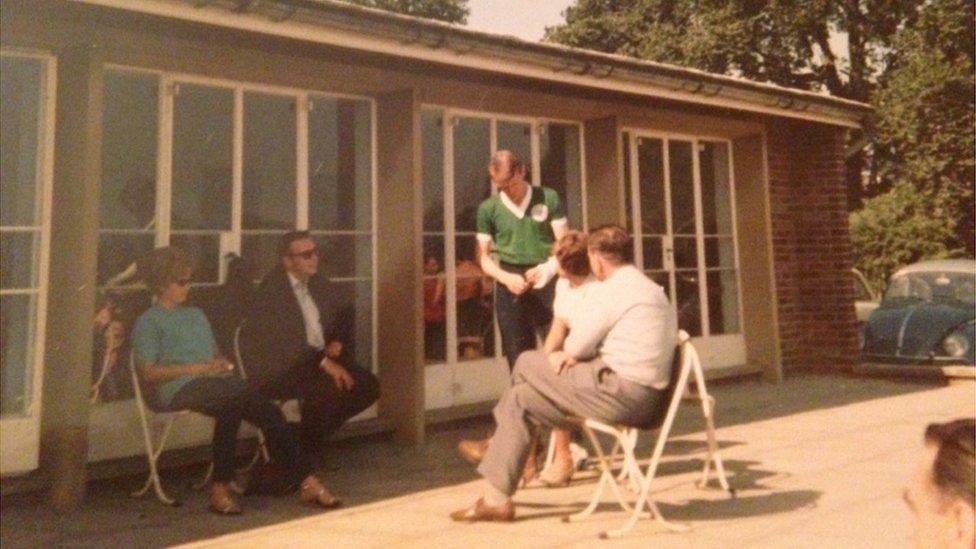
The players casually chat with supporters at the clubhouse of the town's Recreation Ground pavilion
Derbyshire was deemed the perfect location for the Germans as all of their group games were being held in nearby Sheffield and Birmingham, and latterly, for their semi-final, to the north at Goodison Park, Liverpool.
The team stayed at Peveril of the Peak hotel, in nearby Thorpe, but frequently forayed into the livelier Ashbourne.
We can only speculate what residents who lived through both world wars might have thought, but those who still remember the "German invasion" of 1966 have nothing but warm stories of their polite and engaging guests.
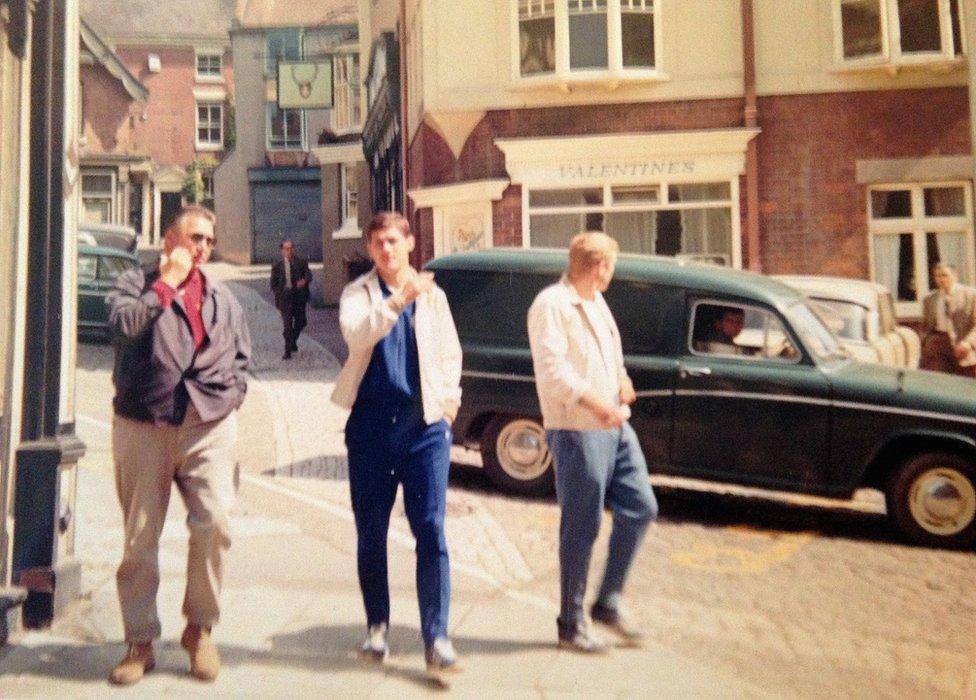
Helmut Haller (right) who scored in the final against England and Max Lorenz (middle) stroll through Ashbourne
Helmut Haller, who scored the first goal against England in the final, went for Sunday lunch with one family and Beckenbauer took up an offer to go horse-riding at a farm. "The Kaiser" would later give his shirt to a local policeman who provided security for the team.
A number of the other players were invited to local discos to dance to The Beatles and Rolling Stones.
They happily posed for for residents and press photographers alike - hence the extensive nature of the photographic catalogue - and took the trouble to sign autographs.
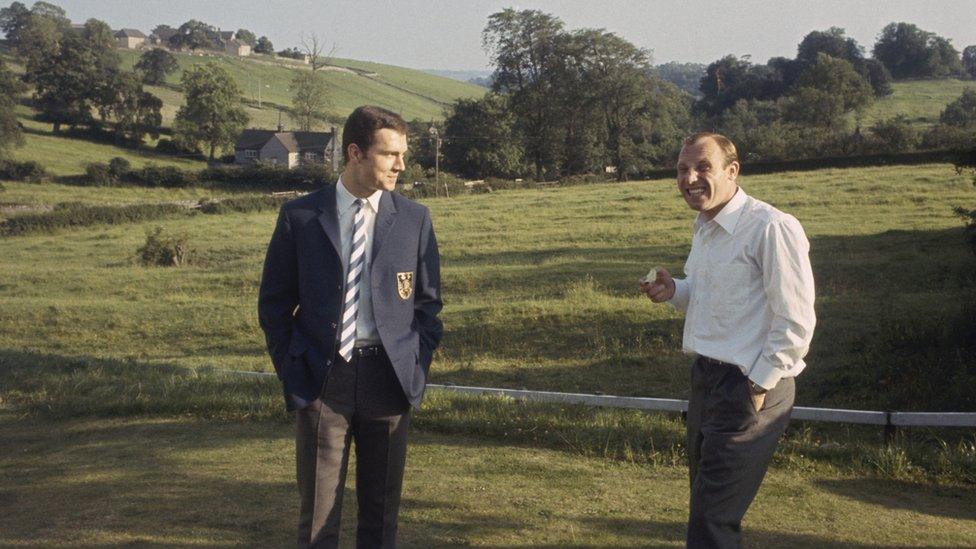
Franz Beckenbauer (left) and West German captain Uwe Seeler enjoy the rural ambience of the Derbyshire Dales
"The town seemed to become alive with Germans," said Pat Johnson, who was 18 in July 1966.
"The team brought a load of supporters with them and they were camping locally and everyone became friendly.
"There was banter but we all hoped that England and Germany would be in the final together and, when it transpired, everybody was thrilled.
1966 World Cup: West Germans training in Ashbourne
"When the supporters left town, they left in a convoy, hooting their horns and waving flags."
The team also moved on, staying in Hertfordshire to prepare for the Wembley final.
Of course what happened at Wembley, on 30 July, is the most celebrated achievement in English sport.
However, it is fair to say had Bobby Moore's men not overcome Portugal in the semi-final there would have been a small section of the country rooting for the Germans.
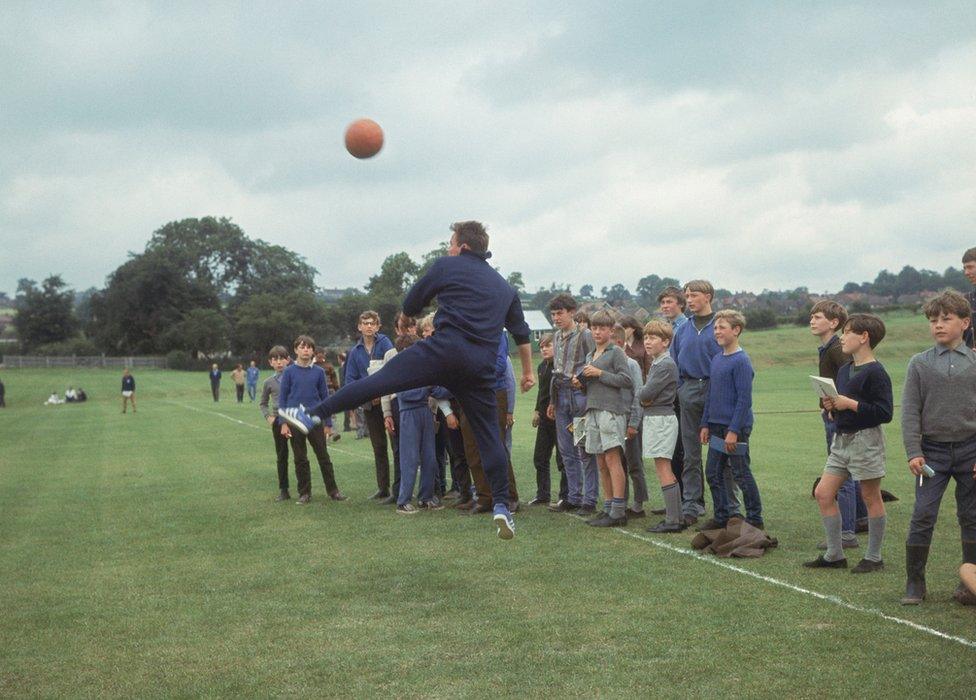
The West German team are watched by a group of local children waiting with their autograph books
Exhibition organiser John Scott, who was not born until 1969, said the story of Germany's stay in Ashbourne had taken "50 years to come out".
"It has never been marked before," he said.
"I heard stories about it, it got bigger [and then] more people came together [to share memories]."
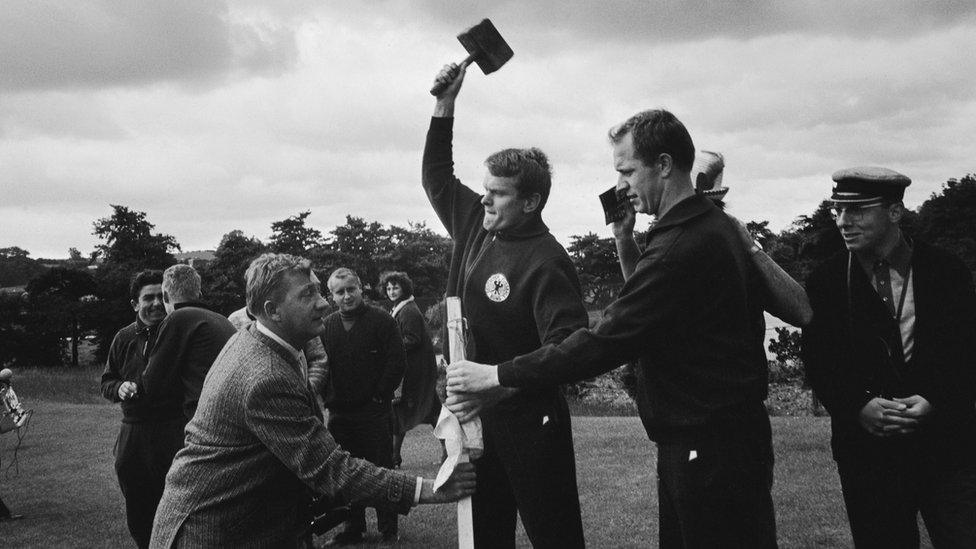
The West German football team constructing goalposts at their training ground in Ashbourne
Billy Webster, who helped with the exhibition, was a 17-year-old painter and decorator during the World Cup.
He took time off work to watch the West Germans play at Villa Park and Hillsborough.
"They were a great credit to their nation, it was absolutely fantastic to have them around," he said.
"We had German players walking around the town, which you'd never see now.
"They were the best team in the world."
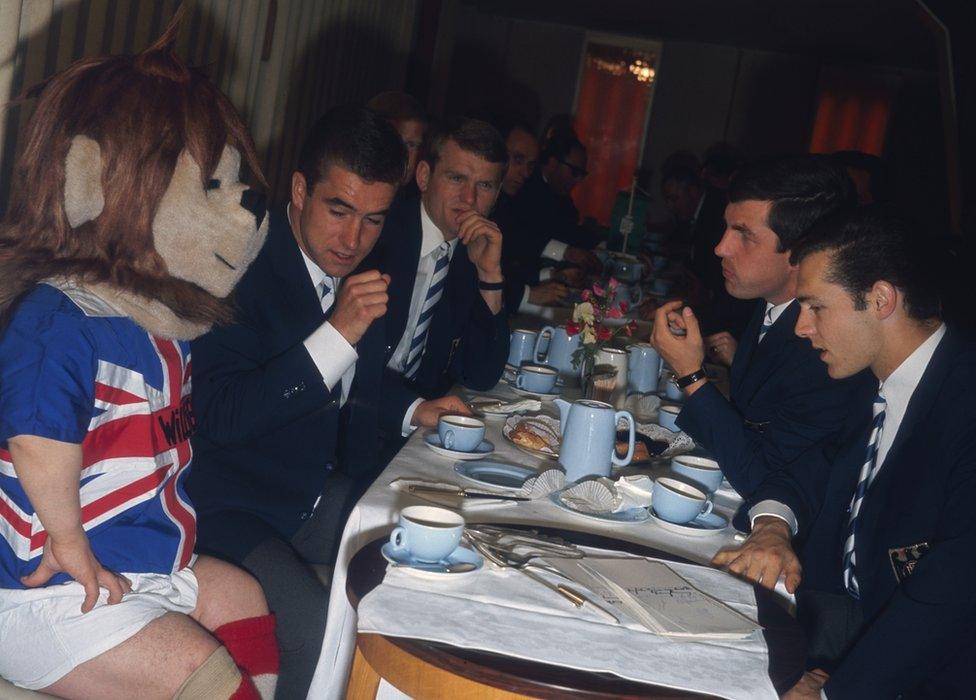
Tournament mascot World Cup Willie having afternoon tea with the West Germany squad at Ashbourne
Speaking at the opening of the exhibition, at the sports pavilion at the Ashbourne Recreation Ground, Tony Jameson-Allen, from the Sporting Memories Network, said the town's hosting of the West Germans was a "unique event".
The charity is working with the FA on a project supporting people across the UK living with dementia, depression and loneliness.
Mr Jameson-Allen believes sharing stories of 1966 can help.
"Try and put it into context today," he said.
"I'm sure if Wayne Rooney was walking down the High Street he would be mobbed with security guards, fans with mobile phones.
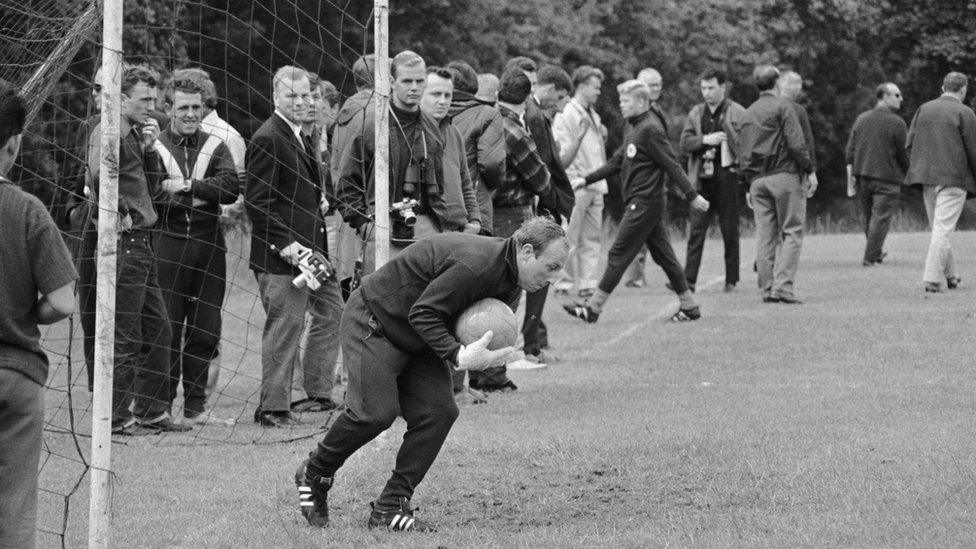
West German striker Uwe Seeler trying his hand in goal while training at Ashbourne
"You look at the pictures in the clubhouse and there's just no-one around, no-one bothering [them], Franz Beckenbauer is just walking down the street.
"What an amazing thought that is."
- Published3 June 2016
